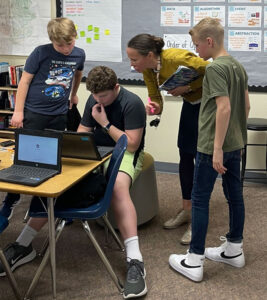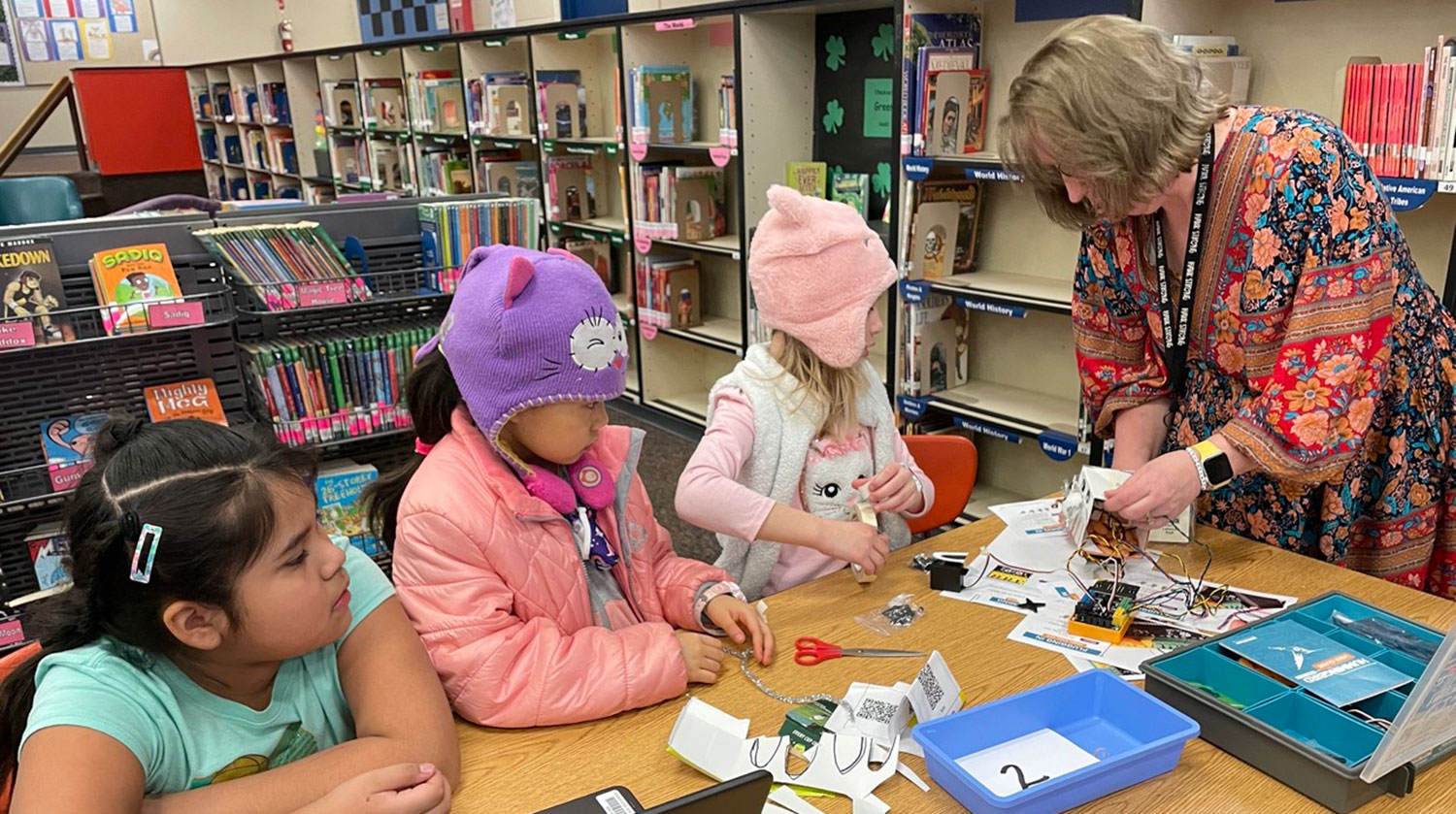Kristi Labadie helps some of her robotics engineers with a wiring issue.
ESD 112 has been providing professional learning and loaning computer science materials to teachers for the past several years. As part of this initiative to promote computer science education in Southwest Washington, we recently visited two elementary schools to observe students using Hummingbird robotics kits in their classrooms. The use of robotics in elementary schools is becoming increasingly popular, as educators recognize the importance of STEM education in preparing students for future careers. Robotics kits like the Hummingbird provide a fun and engaging way for students to learn about technology and programming, and they help to develop skills that will be valuable in many different industries.
Our first visit was to Hearthwood Elementary, where we met with Mrs. Labadie’s 3-5th grade robotics club. These students were experimenting with Hummingbird robotics kits, one of the solutions recommended by Katherine Livick, CS lead for the region. The Hummingbird robotics kit is a popular choice for elementary and middle school educators because it’s versatile and user-friendly, even for those who have no prior experience with coding or robotics. The kit includes various sensors, motors, and LEDs that can be easily programmed to create interactive projects that integrate into any curriculum area.
The students at Hearthwood had some previous experience with coding, but building their own simple moving robots was new for them. Students learned how to program the sensors and motors to respond to different inputs. The students were enthusiastic about the projects they were working on and were excited to share their creations with us (and with their parents, who were visiting the club that afternoon).
“I have always loved working with robotics and kids; however, I never felt comfortable with the programming side”, said Mrs. Labadie. “After working with Katherine, the ESD 112, and the elementary computer science pilot endorsement pilot, I felt so much more confident putting robots in front of kids for them to explore. Because of this, I allowed more open ended opportunities and was able to provide resources and guidance because I was confident they could use the tools to figure out their problems and challenges. Our month long session with Hummingbird kits was a huge success and students are already asking me when the next one will be!”

Hockinson teacher Hollie Rose helps students debug some code.
Our second visit was to Hockinson Heights Elementary, where we observed Mrs. Rose’s class working on jitterbug robots using Hummingbird robotics kits that they had borrowed from ESD 112. Jitterbug robots are small, insect-like robots that move in unpredictable ways, mimicking the behavior of real insects. The students were assembling their first robots and learning how to program the sensors and motors in the kit. The activity provided opportunities for the students to engage in inquiry around how the different components of the robot would work – many groups were wondering aloud about “how big do the feet need to be?” and “Why does the tri-color LED have four wires?”
Mrs. Rose noted, “ESD 112 has been invaluable in providing the training I need to bring coding and robotics into my classroom. The PD provided allowed me to experience being a learner and gain the resources needed to teach computer science. Having access to Hummingbird robotics is a huge gain for our class! It provides a platform for my students to learn, problem solve, question, persevere, work in teams, and be exposed to robotics. It is a wonderful gift to have ESD 112 providing these opportunities!”
We were impressed by the level of engagement and creativity that we saw in both classrooms. The students were eager to learn and experiment with the Hummingbird robotics kits, and they were using their imagination to create unique and interesting projects.
Overall, our visits to these two classrooms were a great example of how computer science can be integrated to enhance learning in elementary schools. ESD 112 is happy to support teachers in incorporating robotics and other STEM tools into their curriculum.

